Music aficionados are likely familiar with R.E.M.’s place in the local music scene in the early days of the band’s career. The band played its first show outside of Georgia at the Station in Carrboro, where the members met Jefferson Holt, who went on to manage R.E.M. for 15 years as it grew into America’s biggest rock band. In 2008, Michael Stipe said the area “…was one of the first places to welcome us into the fold from the relative comfort of Athens. We’ve never forgotten that.”
I don’t know if R.E.M was hanging around Chapel Hill when they were writing songs for its 1985 album Fables of the Reconstruction, but as I gave it a listen recently I couldn’t help but wonder if the town influenced at least one song: “Can’t Get There from Here.”
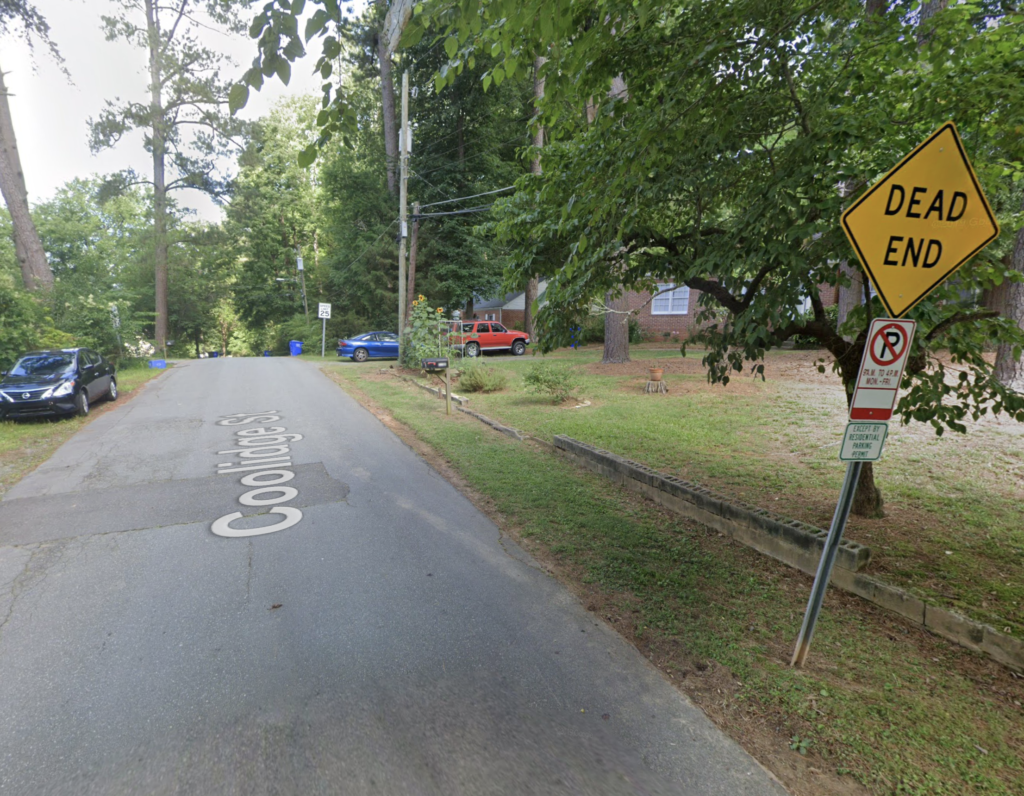
Aside from a few blocks around UNC’s campus and adjacent to Franklin St., Chapel Hill is dominated by dead-ends. Many residents of Chapel Hill live in suburban neighborhoods marked by cul-de-sacs and limited connectivity to businesses, parks, schools, or other amenities that enhance quality of life.
Across town, sidewalks and bike lanes stop and start at random, as if they were planned by an urban design bully who likes to lure then humiliate walkers and cyclists. Our biggest roads, controlled by the pedestrian-hostile NCDOT, have carved the town into balkanized territories with boundaries that only the bravest among us cross on foot. Our neighborhoods and town wide land use patterns bind most of us to cars and reduce our social interactions with strangers – one of the key benefits of and purposes for urban life – to sneering at one another in parking lots and traffic jams. The effect of all this disconnectedness is that, as Michael Stipe might put it, “Everybody Hurts” (groan, I know).
We often talk about micro-connections on the Chapel Hill Planning Commission. The term is more art than science but in my mind it refers to short connections – think feet rather than miles – that yield big results by enabling non-auto travelers to get somewhere safely and efficiently. Depending on the situation, a micro-connection may be a bridge, a crosswalk, stairs, a sidewalk, a footpath, or a pedestrian easement across private property.
While it’s important for the town to continue pursuing large-scale infrastructure projects that enhance connectivity, like greenways and bike lanes along major roads, it’s also important that we recognize that our major roads are inherently dangerous for pedestrians and cyclists and, even with improvements, are unpleasant places to bike or walk alongside. We need alternatives that connect the dots between our fragmented neighborhoods, commercial centers, parks, and schools. While a single micro-connection may have little impact on overall connectivity, ten or twenty of them can create a network of short cuts that both makes a place more navigable and makes it more fun to navigate, encouraging the exploration of parts of town one never sees if they only drive.
Good examples of micro-connections are seen in the map below; note the three thin green lines connecting three separate suburban neighborhoods. If you live on Woodcrest Drive and have a child who attends Culbreth Middle School, these simple connections enable your child to walk or bike to school without using busy Smith Level or Culbreth Roads.
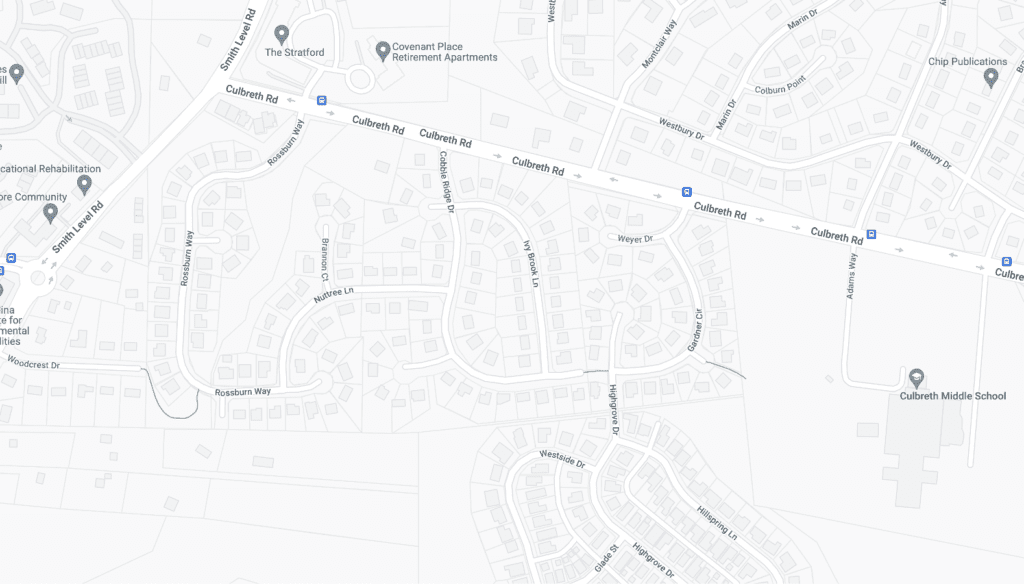
The connections, as shown below, are inaccessible to cars, create a safe and pleasing pathway.
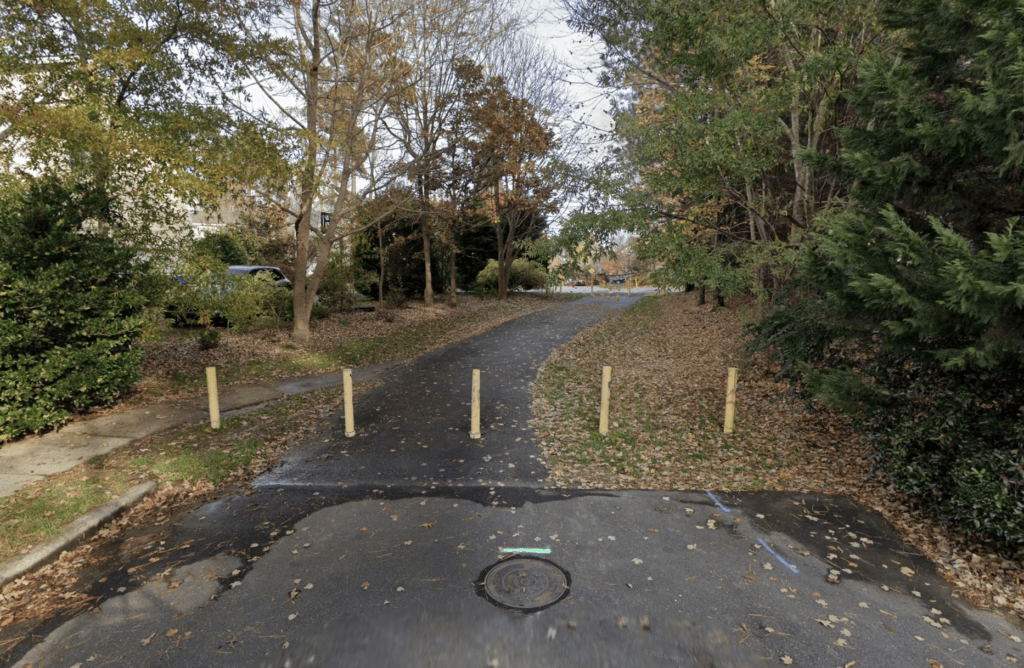
A challenge with micro-connections is that there tends to be only one opportunity to create them: when a parcel is being developed or redeveloped and requires the approval of Town Council. Despite the economic benefits of pedestrian amenities, property owners are loath to cede private land for public use, which makes it important to identify opportunities for micro-connections early in the review process for a new development and secure the agreement of the developer to provide or allow it. Like affordable housing units, green space, or sustainable design elements, micro-connections (when feasible) should be a community benefit that the Town of Chapel Hill always seeks.
Most recently, the Planning Commission has discussed a micro-connection for the redevelopment of Trinity Court in the Northside neighborhood. Conveniently, the Town of Chapel Hill is the developer of Trinity Court and also happens to own a strip of adjacent land (highlighted in green in the image below) that could enable the installation of a connection from the complex to Church Street. Such a connection would make access to Northside Elementary, the Hargraves Center, and downtown Carrboro easier.
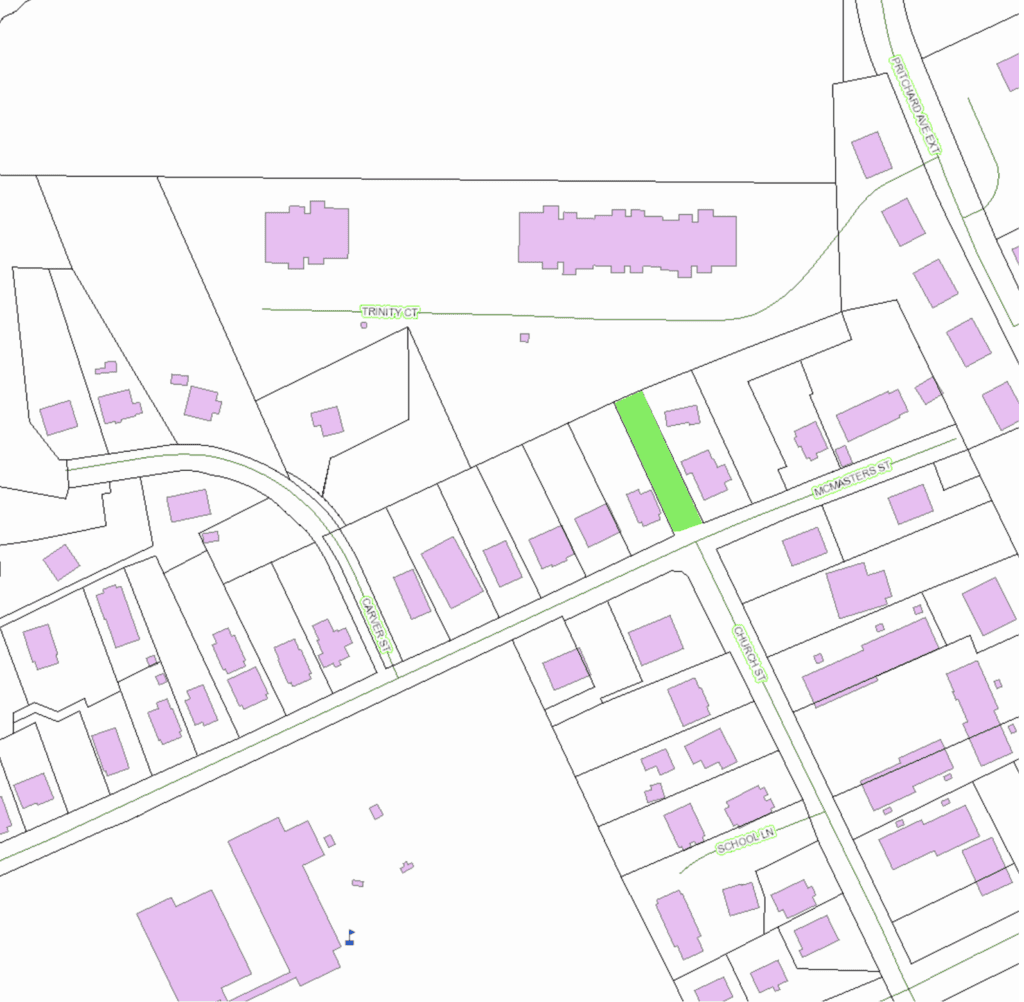
The removal of a chain-link fence now in place around Trinity Court and the installation of a connection to Church Street would reduce the distance to walk from Trinity Court to the school from a half-mile to less than a quarter-mile and reduce the distance to walk to Hargraves from .9 to .6 miles. While a quarter or third of a mile may not seem like a great distance, it is just far enough to make someone choose to drive their car to a destination rather than walk. If you lived at Trinity Court and worked at Northside Elementary, or your child attended school there, which of the routes to school shown below would you prefer?
Option 1: Pedestrian route and distance from Trinity Court to Northside Elementary without new connection to Church Street
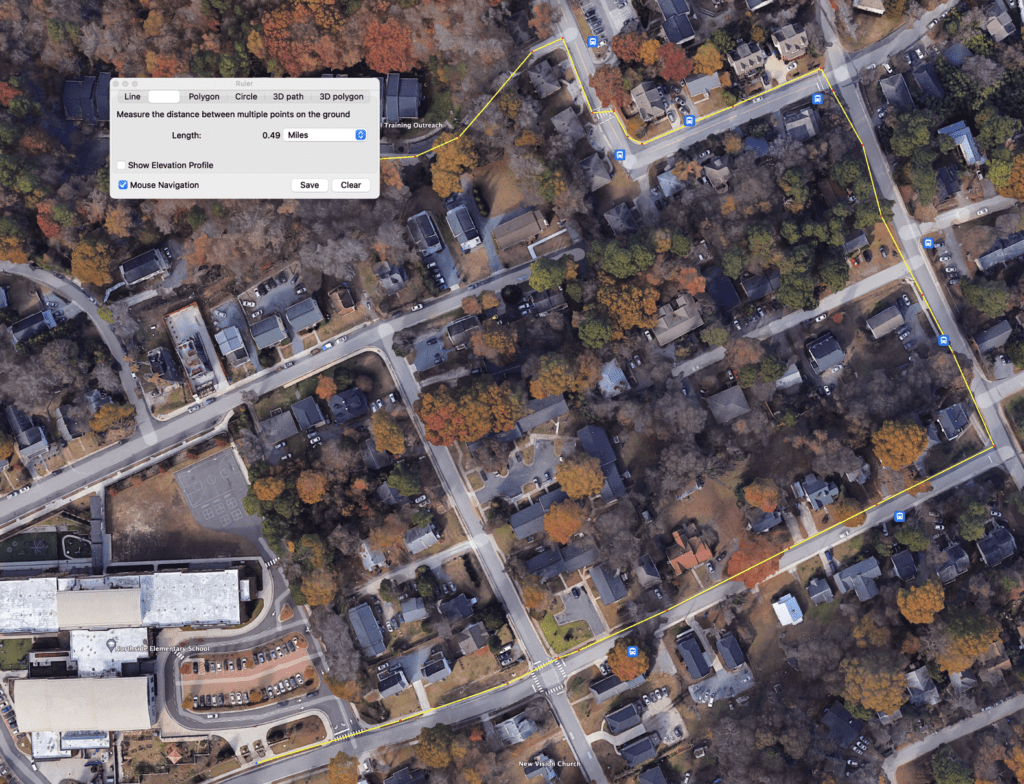
Option 2: Pedestrian route and distance from Trinity Court to Northside Elementary with new connection to Church Street
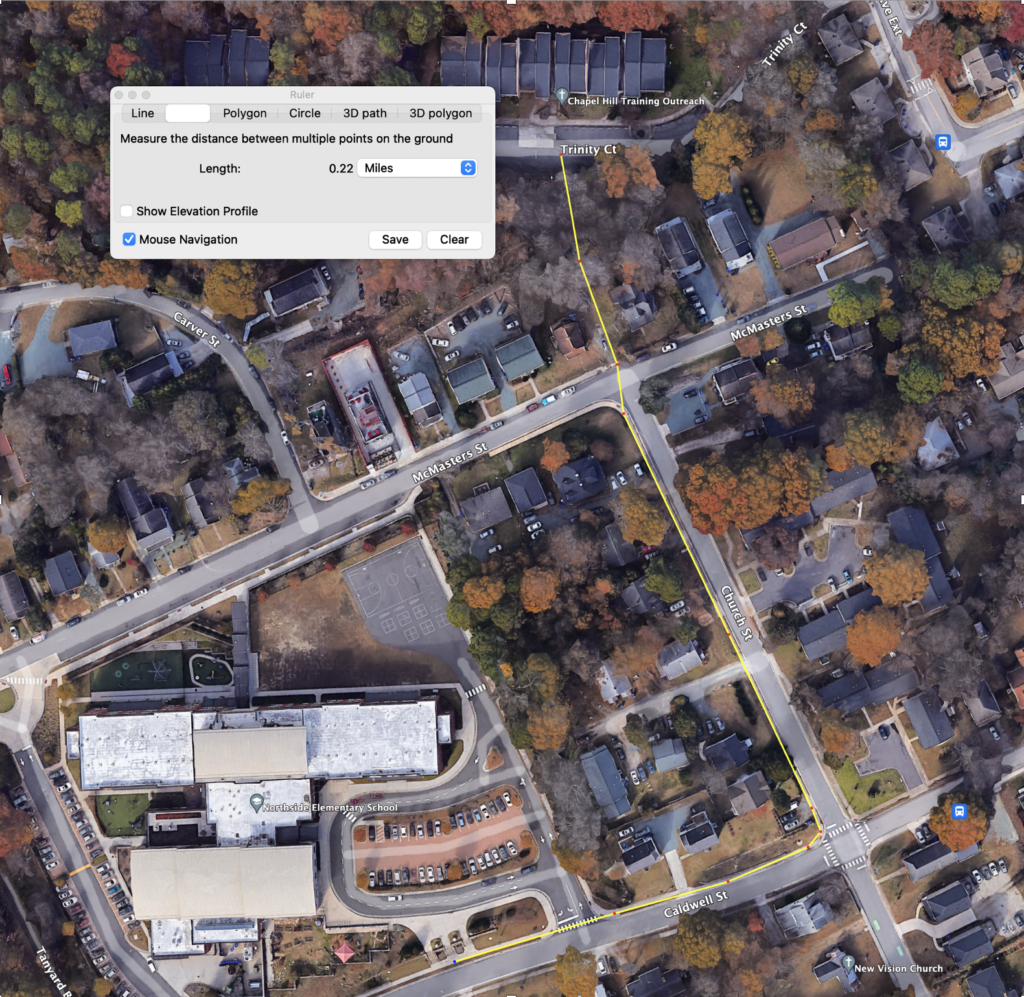
It’s worth noting that micro-connections need not be costly. The photo below is of a set of stairs leading to Northside Elementary from the Tanyard Branch Trail. Given the steep topography of the Trinity Court site, this may serve as a good, low-cost model for a connection there.
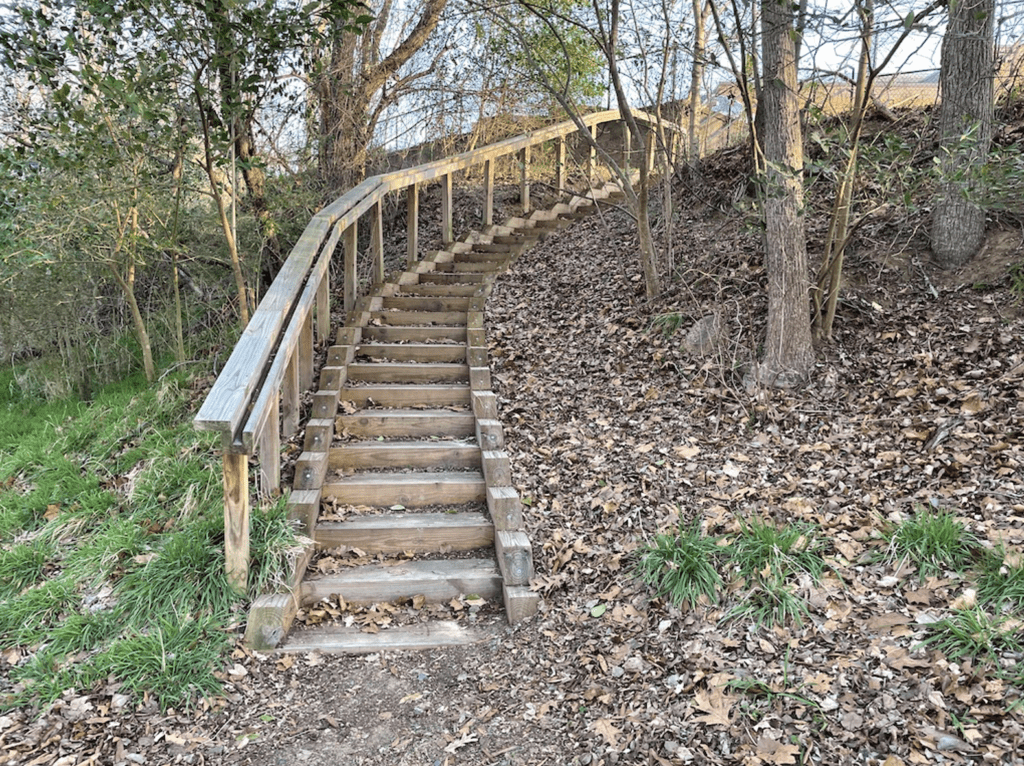
My favorite R.E.M. song is probably “Half a World Away,” which is how far many of Chapel Hill’s great amenities can seem to those of us who cannot drive or prefer not to. My hope is that by more intentionally seeking these types of connections, we can reduce the physical and social distance between us that our car-centric land-use patterns encourage. Keep an eye out for a petition soon from the Planning Commission that will ask Town Council to explore and fund the installation of this micro-connection.
